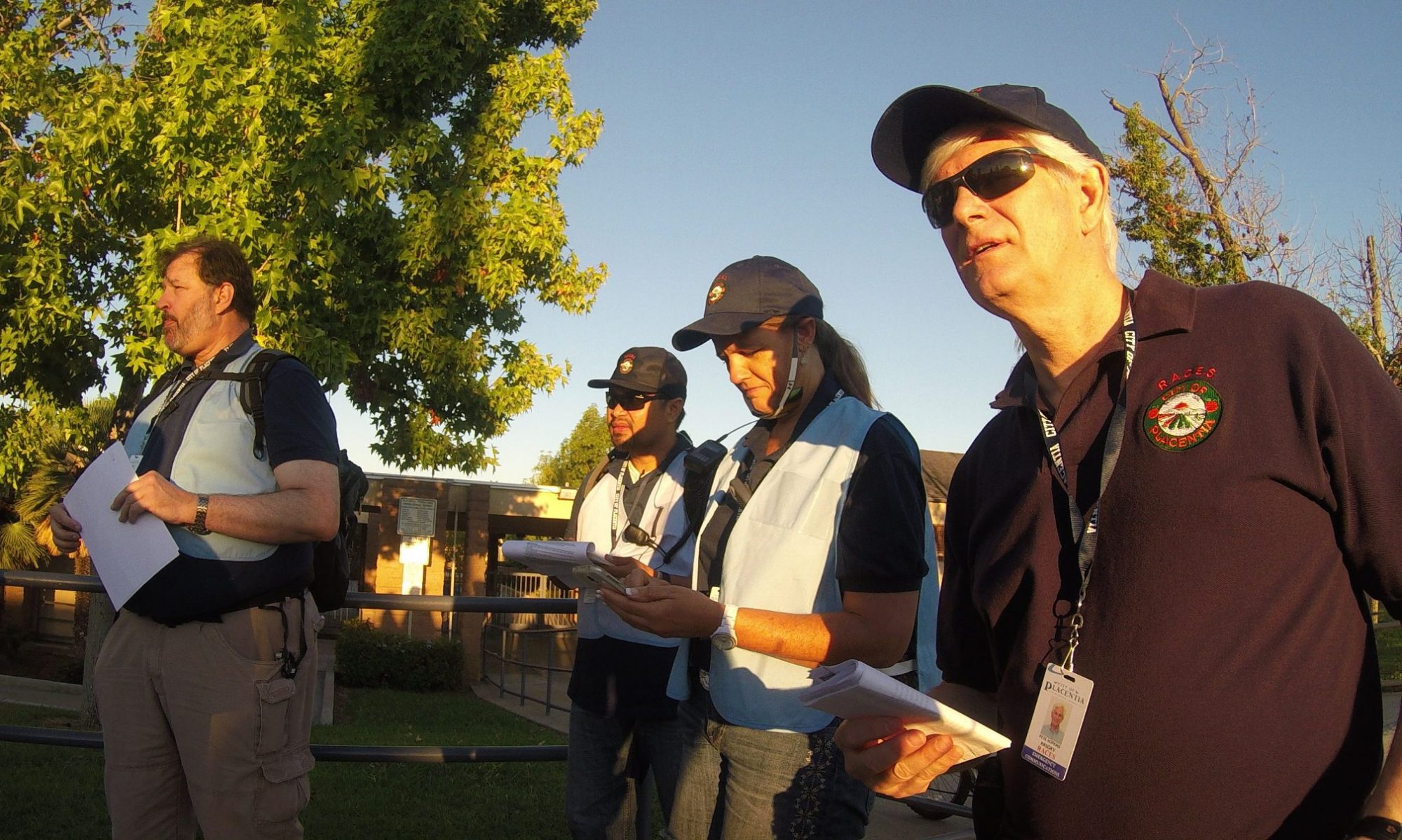Placentia RACES is allowed positions within the Placentia emergency command vehicle. We currently have two Yaesu FT 8900R radios. This radio is a quad Band FM transceiver providing 50 Watts of power output on the 29/50/144 MHz Amateur bands and 35 Watts on the 430 MHz band.
Operation manual for Yaesu FT8900R
The main ham radio electronics is mounted in an equipment rack. The radio control heads are stored away in one of the overhead storage compartments.
You will need to pull both control heads out of storage and connect them to the command vehicle wall interface plates. Please note the exact interface plate’s label and note its number because you will need to go to the equipment rack and patch the radio electronics properly to the vehicle location for the radio head to work. The patch between radio and control head is completed at the equipment rack patch panel located in the middle of the vehicle.
The command vehicle has a number of operation seats and each seat has its own communications wall interface with a position number. All communications is accomplished using Ethernet wall connectors. It is necessary that you know which chair location you are using because you will need to patch the proper chair location number too and from the radio electronics.
If two RACES operators are in the vehicle it is strongly recommended that both radio heads be connected because the second operator can use the backup radio to monitor what is going on. The reason for this is the police dispatch operators are also in the command vehicle and will be making frequent calls which makes concentration for RACES traffic difficult.
There are two antennas on top of the command vehicle that need to be extended upward before using the radio. Also, please remember to position the antennas down when finished.
